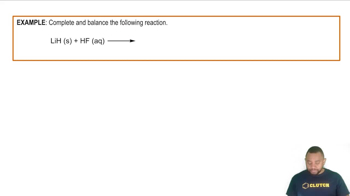Textbook Question
The reaction A21g2 + B21g2 ∆ 2 AB1g2 has an equilib- rium constant Kc = 9. The following figure represents areaction mixture that contains A2 molecules (red), B2 mol- ecules (blue), and AB molecules. What statement about the mixture is true? (LO 15.5) (a) The mixture is at equilibrium, and there will be no net shift in reaction direction.(b) The reaction will shift toward the reactants to reach equilibrium.(c) The reaction will shift toward the products to reach equilibrium.(d) More information is needed to answer this question.
1
views




